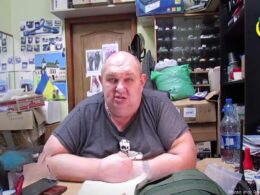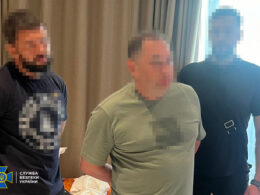The National Anti-Corruption Bureau of Ukraine (NABU) and the Specialized Anti-Corruption Prosecutor’s Office (SAP) claim to have uncovered a scheme involving the unlawful seizure of state-owned land worth UAH 291 million ($7.3 million) in Sumy Oblast, northeastern Ukraine.
Ukraine sees tackling corruption as one of its priorities. Last December, the Ukrainian parliament passed new anti-corruption laws in a bid to align more closely with the European Union.
According to statements by NABU and SAP published on 23 April, a criminal group behind the scheme was led by the former head of the Agrarian Committee of Ukraine, who currently serves as a minister. The reports did not mention his name, but according to a LIGA.net source in law enforcement agencies, this refers to Mykola Solskyi, the Minister of Agrarian Policy.
NABU and SAP accused Solskyi, along with several other suspects, of seizing 2,500 hectares of state land, valued at UAH 291 million ($7.3 million) and attempting to seize an additional 3,300 hectares worth UAH 190 million ($4.8 million), but SAP and NABU claims to have prevented their efforts in a timely manner. The charges fall under Article 191 of the Criminal Code, which carries a maximum sentence of up to 12 years in prison.
The illegal scheme of seizing state-owned land
According to the investigators, Solskyi, who owned several agricultural companies before becoming a minister, allegedly conspired with the head of the State Service of Ukraine for Geodesy, Cartography, and Cadastre (Geocadastre) in 2017 to seize land that two state-owned enterprises in Sumy Oblast were using.
The scheme participants allegedly destroyed documents that granted two state enterprises in Sumy Oblast the right to permanently use the land. The regional Geocadastre subsequently drew up an act claiming unauthorized occupation of the plots.
To prevent the transfer of land to third parties, the plots were included in a list for a lease rights auction, but no bidding was ever conducted, according to SAP.
The land was transferred to predetermined citizens under the guise of exercising their right to free land, with the condition that they sign agreements to lease the land to an agricultural holding before receiving ownership.
NABU states that the scheme operated from 2017 to 2021, during which the participants seized 1,250 land plots totaling 2,493 hectares.
Issuing notices of suspicion in progress
The criminal group, allegedly led by Solskyi, reportedly included top officials of the State Geocadastre bodies and individuals who controlled the activities of these bodies, referred to as “curators” by the anti-graft investigators.
SAP has issued a notice of suspicion to Solskyi and is still serving notices to other members of the suspected criminal ring.
NABU and SAP say they prevented the scheme participants from seizing an additional 3,282 hectares of land worth approximately UAH 190 million ($4.8 million). The land plots in question are currently under arrest.
Suspect’s reaction to allegations
Mykola Solskyi responded to the recent allegations regarding his suspected involvement in a land seizure case. In a Telegram statement, he clarified that the events in question pertain to the period between 2017 and 2018, during which he was working as a lawyer and had not yet assumed the roles neither of the Committee on Agrarian and Land Policy nor the Minister of Agrarian Policy and Food of Ukraine.
According to Mykola Solskyi, the seven-year-old circumstances revolve around a dispute between state-owned enterprises and individuals, particularly ATO (Anti-Terrorist Operation) military personnel, over land legally granted to the latter.
“Such disputes are resolved through the court system, including the Supreme Court, and to my knowledge, several recent decisions have confirmed the absence of rights held by state enterprises to the lands in question, which NABU is likely referring to,” wrote Solskyi.
He pledged to maintain maximum transparency in order to establish the truth, although he believes this may not be necessary, as all relevant data is openly available to law enforcement agencies, and the courts are currently considering the evidence and arguments presented by both parties.
Related:








